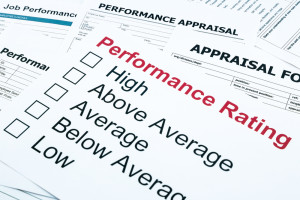There’s been some noise in the business press of late regarding large corporations’ decisions to eliminate performance reviews. Like those who have installed unlimited PTO (Paid Time Off) and other “new” management methods, review-less organizations are deemed to be more enlightened. Employees, especially Millennials, who work for enlightened organizations are presumed to be happier, and therefore more voluntarily productive.
To quote David Crosby in the song Deja Vu, “We have all been here before.” In the 70’s we had “Management by Walking Around” (MBWA). The idea was that managers would spend more time observing and interacting with their subordinates. This ongoing communication would eliminate the need for periodic formal reviews.
I was living in New Brunswick, NJ as I finished my undergraduate degree. Johnson and Johnson headquarters is in New Brunswick, and J&J dominates the local news as the biggest fish in a small pond. Their enlightened adoption went so far as letting employees decide their own goals for measuring effectiveness.
(A momentary aside. In the 70’s, as the Baby Boomers flooded into the workplace, there was substantial managerial discussion about how they were different from preceding generations. They were more educated, more concerned about the planet and social issues, and less inclined to follow command-and-control management systems. Sound familiar?)
Johnson and Johnson won multiple national awards as a great place to work. Employee surveys ranked it highly for its culture and atmosphere. Unfortunately, J&J began regularly missing Wall Street’s quarterly expectations.
Eventually there was a change at the top. As I recall the newspaper interview with the new CEO, he described J&J as “A great place to work. Unfortunately, we had a bunch of really happy employees who weren’t actually accomplishing anything.”
Now Amazon is taking a media pounding for its “rank and yank” review systems. Wait a minute; isn’t this roughly the same as Jack Welch’s famous (and very popular) “Topgrading” at GE? The book, by Brad Smart, is now in its third edition. Is striving to hire and promote the best workers good business, or just nasty capitalism run amok? Is Amazon really a sweatshop, or merely constrained by its business model from practicing the type of enlightenment that companies with 90% incremental margins (like Netflix) can afford?
 I teach an annual program for first-level supervisors. In eight years, I’ve never had a participant volunteer that he or she likes doing performance reviews. In most small businesses they are avoided, delayed, and rushed when they finally happen. They are as painful for the reviewer as for the reviewee.
I teach an annual program for first-level supervisors. In eight years, I’ve never had a participant volunteer that he or she likes doing performance reviews. In most small businesses they are avoided, delayed, and rushed when they finally happen. They are as painful for the reviewer as for the reviewee.
The solution is simple, although its not easy. Like so many other business processes, the work has to come up front to make execution simple. The secret is in setting goals. Real goals, not cotton-candy. What employee can measure their progress against “Sally should focus on becoming more proficient at her job,” or “Bob is almost ready to be a supervisor. He needs to develop his ability to delegate?”
I know it’s old hat, but Specific, Measurable, Attainable, Resourced, and Time-Sensitive (SMART) works, and its use in performance evaluation is a powerful tool. On Bob’s expected progress to supervisor, here are the possible goal parameters.
- Specific: Bob needs to develop the skills and experience to supervise others effectively (This would be the whole goal setting portion of most performance reviews.)
- Measureable: This will be rated on Bob’s completion of training as outlined, and his proven ability to understand the quality and productivity metrics in his department by preparing all reports for a complete project.
- Attainable: Bob agrees that the objectives and timeframes outlined in these goals are achievable, and the company commits to making the necessary adjustments to support these goals.
- Resourced. Approval is hereby given for Bob to enroll in Supervision I and II as delivered by Online Training International, followed by assignment as assistant supervisor on a project of not less that $5 million.
- Time sensitive: Bob will be responsible for arranging his schedule to permit his completion of Supervision I by the end of the first quarter, and Supervision II by the end of the second quarter. Assignment to a large (>$5MM) project will take place following the training, but no later than the first month of the fourth quarter.
Now Bob has a road map of what he needs to do, and how to do it if he wants to advance. A ten minute check at the end of each quarter can tell if he’s on track. When the next annual review comes, there is plenty of advance notice as to what the likely result will be.
Not every job is as easily broken down. In fact, most are much more difficult, but the payoff is substantial. After all, if you as a business owner can’t define what you expect from your employees, how can you hold them accountable for delivering it?

7 Responses to The Toughest Part of Performance Reviews